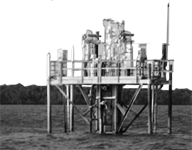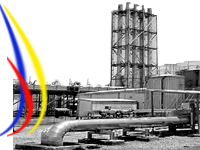Exploration History:
Tanzania has been intermittently explored over the last 60 years. Most of the multinational petroleum companies were represented in the area, at one time or another. Significant gas discoveries were made at Songo Song, Mnazi Bay and in the southern deepsea basin opposite Ruvuma. More than 50 exploration wells and development wells have been drilled providing vital geological information of the subsurface and potential for hydrocarbons. The cumulative seismic coverage in public domain is approximately 100,000 km; 70,000 km offshore and 30,000 km onshore, including theinterior rift basins. About 15,000 square km of 3D seismic data has been acquired in the offshore areas.
Phase I: 1952-1964:.
BP and Shell were awarded concessions along the coast, including the large islands of Mafia, Zanzibar and Pemba. Extensive geological work was conducted including the drilling of more than 100 stratigraphic shallow boreholes, gravity, aeromagnetic, and reflection and refraction seismic surveys. A thick sedimentary section was identified and four wildcats were drilled, one each on Zanzibar, Pemba, and Mafia Islands and another onshore in the Mandawa Salt Basin. Although the wells did not encounter significant hydrocarbon shows, they confirmed the presence of seal, reservoir and source rocks combinations in the stratigraphic column.
Phase II: 1969-1979:.
The State Company, Tanzania Petroleum Development Corporation (TPDC) was established in 1969, and the first Production Sharing Agreement (PSA) was signed with AGIP on former BP/Shell concessions. During this period large regional, on and offshore, seismic surveys were conducted. AGIP, joined by Amoco in 1973, drilled three onshore and two offshore wells, including the significant gas discovery at Songo Songo in l974. The discovery was confirmed by TPDC in 1975-79, through a three well program one of which (SS-2) was a blow-out.
Phase III: 1980-1991:.
Adoption of The Petroleum (Exploration and Production) Act of l980 and high oil prices, encouraged increased activity. Most of the drilling in Tanzania occurred in this period, including the delineation of the Songo Songo Gas Field and the gas discovery at Mnazi Bay (l982) by AGIP. TPDC participated in Songo Songo development, drilling two wildcats at Kimbiji and several seismic programs. Increased interest in the interior rifts, partially as a result of Project PROBE, resulted in AMOCO drilling two wells in the Rukwa Rift basin. Shell drilled Dira-1, in Mafia Channel in 1991 and relinguished the license in the same year.
Phase IV: 1992-1999:.
At the start of this phase there were no active concessions and little activity except for various studies, and a dedicated effort by the authorities to achieve fiscal and technical agreements for the development of the Songo Songo gas field. TPDC, Tanesco, and Canadian companies, Ocelot and Trans-Canada Pipelines, are actively working on the Songo Songo gas field development, transmission and utilization. Beginning in l995 a number of international companies acquired exploration licenses in the coastal basins. Tanganyika Oil Company, in 1996/97, drilled two wells in the Mandawa Basin. Exploration agreements have been signed with Antrim and Canop, both of Calgary, Canada and Ndovu Resources of Australia. Discussion are underway with Pemba International of Calgary Canada for a PSA over Kimbiji/Ruvu areas. Agreements to develop the Mnazi Bay gas discovery and to build a power generation plant are being negotiated.
Phase V: 2000 todate:.
This phase was marked by the acquisition of an open grid 2D seismic survey by TPDC and Western Geco over the deepwater areas offshore Tanzania in the Year 1999 - 2000. Nearly 11,000live km of high resolution 2D seismic data was acquired.
The interpretation of the new data led to the licencing of all the areas between the 2002 - 2007 to Petrobras (Blk - 5, 2004), Ophir (Blk - 1, 2005), Ophir (Blks - 3, 4, 2006), Statoil (Blk - 2, 2007), Dominion (Blk - 7, 20_), Petrobras (Blk - 8, 2012).
Following the licencing, a large amount 70,000 live km of 2D seismic data and 15,000 square km of 3D seismic data were acquired in all the blocks. This was followed by exploration drilling of wells BG( Blks - 1,2,3), Statoil (Blk - 2) and Petrobras (Blk - 5), making significant gas discoveries in blocks 1, 2, 3 and 4. Further exploration, including appraisal drilling is envisuged for the years 2012/13.

